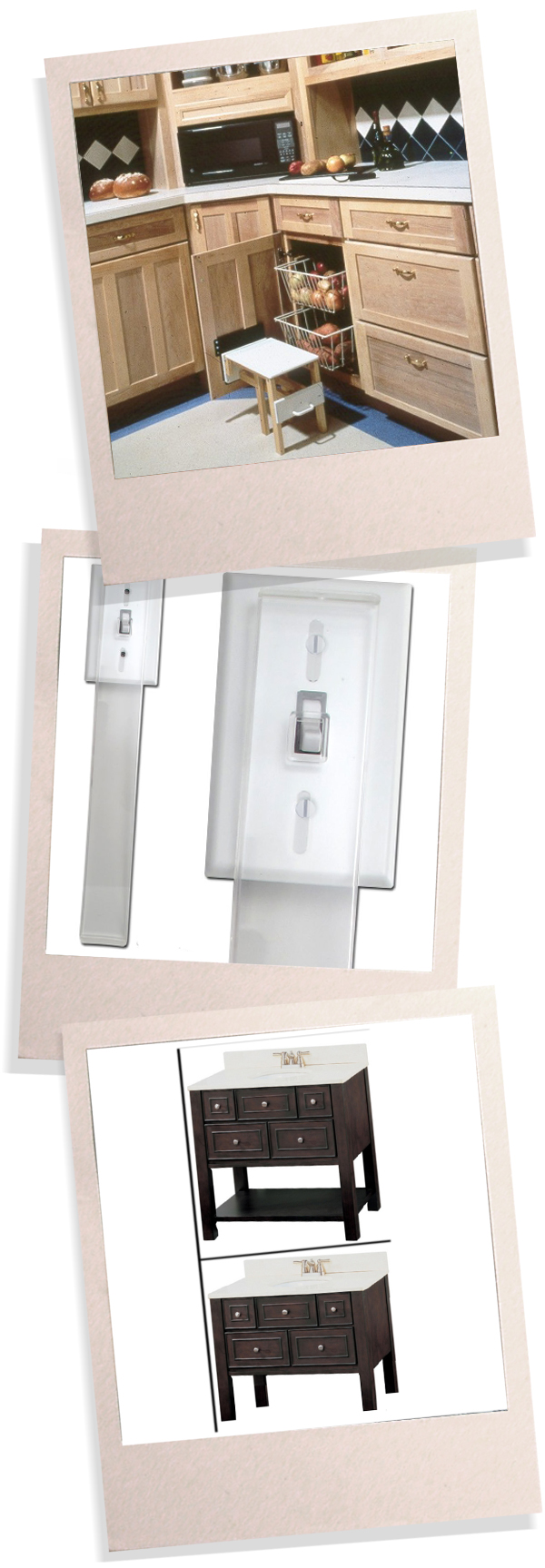ADAPTATIONS - HOME
Being a person with dwarfism can be challenging at times since the world around them is not designed to necessarily accommodate an adult 4’ 10 and under. Nor is it designed for a person with shorter arms or legs than the average-sized person. This is true whether you are an adult or a child with dwarfism. While the outside world caters more towards average height people, what about a person’s home? Do you adapt your home to fit your specific needs? That answer will vary depending on who you talk to. Modifications to a person’s home depend on many factors like whether or not the person owns the home or rents, financial ability to do so, members of the family (average sized and short stature), personal taste and so on.
Some people with dwarfism will choose not to change anything in their home and just use simple tools to help them function. This might include placing step stools throughout the home. They are helpful for reaching sinks, getting onto an average-sized chair, reaching countertops and stovetops in the kitchen, and can be used as footrests at home and at school. Step stools are most helpful in the bathroom, both at the toilet and sink.
Sticks or other items are useful to reach things, push buttons, pull levers and turn on and off light switches. There are also several gadgets which attach to the light switch and can extend to a reasonable reaching range for people with dwarfism. If those gadgets are still not low enough, people can drill a hole in the switch itself and attach a long dowel using string or wire. Doors can be easily opened using this same technique with a lever-style door knob and some rope.
Modern technology is a blessing to people with dwarfism. While it could be expensive at times, touch-on lamps, smart phone activation, touchpad garage door opener, remote controls, and even "clap-on" lights are recent conveniences that can make life easier.
Others might take it a step further and just change certain areas in the home, like lowering a section of a counter top in the kitchen, installing a sink with levers that are within reach or taking the legs off pieces of furniture so they are lower to the ground.
There are a percentage of people who will modify a majority of their home so that it is more safe and comfortable for them to live in. This may include lowering light switches, lowering windows so they are able to look out them, lowering all kitchen cabinets, custom fabrications and purchasing modified furniture. Some people with dwarfism require a scooter or wheelchair for mobility. In this case some may include ramps to get in and out of the home and might have fewer obstacles within the home to move around easier.
How much one adapts in their home depends on the many factors mentioned above. Whatever a person chooses, the goal should be that they live safely and in comfort, the way a home is meant to be.



